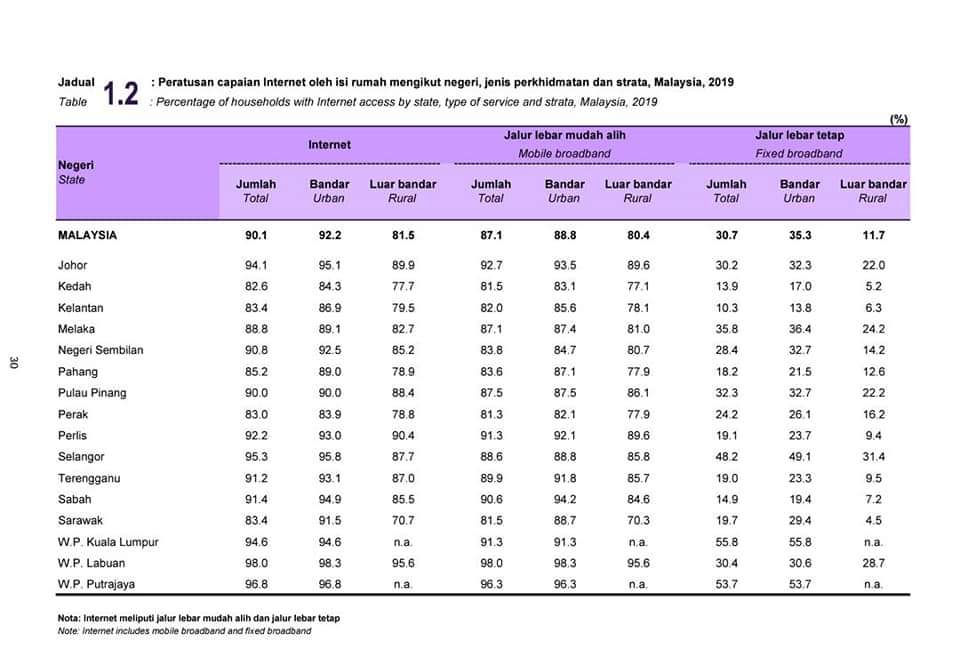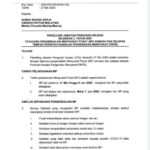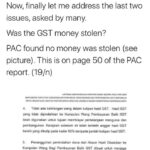Saya menyambut baik kenyataan ringkas Dato’ Abdul Rahman Dahlan berkenaan jurang digital yang wujud di Malaysia. Krisis COVID-19 dan PKP yang dilaksanakan telah meningkatkan, secara mendadak, kebergantungan masyarakat dan ekonomi terhadap sistem dan penyampaian secara digital atau atas talian.
Kebergantungan ini pula mendedahkan betapa besarnya jurang digital tersebut. Ternyata kelompok yang tinggal di bandar, lebih fasih dengan bahasa Inggeris dan berstatus ekonomi menengah ke atas lebih selesa, mudah dan bersedia untuk menerima faedah dari peralihan ini.
Fenomena ini menuntut semakan menyeluruh terhadap kerangka pembuatan dasar termasuk mengubah cara kita berfikir tentang konsep pembangunan itu sendiri.
Contoh ringkas,
a) Kalau dahulu pembangunan infrastruktur sering kali dikaitkan dengan pembinaan jalan, hospital, sekolah dan sebagainya, hari ini walaupun masih ada keperluan perkara asas tersebut, sudah wujud dimensi baharu yakni infrastuktur digital.
b) Kalau dahulu kita bercakap tentang 3M Membaca, Menulis, Mengira. Sekarang ada 4M termasuk Mengaturcara Komputer (coding).
Status sekarang belum memuaskan.
Misalnya,
– penembusan Internet jalur lebar di Putrajaya 96% berbanding kawasan luar bandar Sarawak hanya sekitar 70%. Malah dalam negeri sama juga boleh wujud jurang tersebut seperti di Sabah – kawasan bandar 94%, luar bandar 85%.
– kualiti rangkaian 4G: 84% masa, penduduk di Lembah Klang, Pulau Pinang, Johor Bahru boleh berhubung kepada rangkaian 4G berbanding kawasan pedalaman seperti Sabah, Sarawak dan sebahagian kawasan lain di Semenanjung hanya 44%.
– dapatan Kementerian Pendidikan awal PKP menunjukkan 37% pelajar tidak memiliki peranti mudah alih untuk sebarang pembelajaran atas talian.
– menurut Pengarah Pendidikan Sabah, 52% pelajar di Sabah tidak mempunyai akses internet, telefon pintar, komputer atau apa-apa peranti mudah alih
—–
Topik jurang digital ini amat meluas, tetapi selain menggesa Kerajaan menyelesaikan masalah, ini antara cadangan umum untuk diperhalusi.
Untuk jangka pendek, selagi krisis COVID-19 ini berpanjangan, fokuskan membantu nasib kelompok tertentu tanpa perlu usaha yang mengambil masa lama. Contohnya
A. Bantu peniaga kecil dari segi capaian pasaran dan operasi atas talian seperti dengan penggalakan penggunaan platform pasaran (marketplace). Tidak semestinya Kerajaan perlu bina platform tersebut; kadang-kala usahasama dengan pihak swasta adalah jalan terbaik.
Antara contoh yang tersedia adalah usaha e-bazar Makmur Johor baru-baru ini dimana Kerajaan negeri dan PBT bekerjasama dengan syarikat GetMakan disamping memberi geran kepada peniaga untuk menggunakan platform tersebut. Serupa, PahangMart menyediakan peluang untuk ribuan peniaga. Pokoknya, Kerajaan tak perlu buat semua dari A-Z sebaliknya menggunakan ruang dasar dan kewangan untuk mempermudah dan menggalakkan adaptasi digital.
B. Kita tak boleh lari dari hakikat masalah kelompok yang kurang kemampuan memiliki peranti. Sehebat mana pun jalur lebar kita jika ramai yang tiada komputer riba jauh sekali iPad, masalah tidak selesai.
Kerajaan barangkali tidak boleh menyelesaikan isu ini untuk semua dalam jangka masa pendek, tetapi keutamaan harus diberikan kepada bidang pendidikan (memandangkan masalah yang telah dikupas diatas). Pada tahun 2010 Kerajaan BN melancarkan Skim Komputer Riba 1Malaysia yang menyedia laptop percuma kepada lebih sejuta rakyat berpendapatan rendah.
Konsep serupa boleh diperhalusi oleh Kerajaan sekarang dengan pelaksanaan yang disesuaikan dengan keadaan semasa. Baik PKP atau tidak PKP, kita mahu elakkan situasi berpanjangan dimana sekolah swasta boleh adakan kelas online, tetapi sekolah kebangsaan terhad atau langsung tidak.
—–
Apapun usaha jangka pendek, penyelesaian hakiki kepada dilema jurang digital ini hanya akan datang dengan revolusi jangka panjang.
Dalam konteks perjuangan UMNO itu sendiri, ini antara cabaran kelangsungan bangsa abad ke-21. Tiada guna retorik semata jika tidak disusuli penyelesaian yang membantu seluruh masyarakat termasuk golongan Bumiputera menjuarai ekonomi baru.
C. Infrastruktur digital yang menyeluruh. Tetapkan matlamat penembusan jalur lebar yang lengkap segenap geografi dan laksanakan secepat mungkin. Semak semula Pelan Gentian Optik dan Kesalinghubungan Negara (NFCP). Walaupun dilancarkan oleh Kerajaan sebelum ini, jika yang elok kekalkan, jika yang kurang, tambahbaik.
D. Tambah pendedahan golongan Bumiputera dalam penggunaan solusi digital. Bantuan pemasaran atas platform-platform antarabangsa dalam apa sahaja jenis perniagaan baik dari produk pertanian di Agrobazaar Online (diperkenalkan Kerajaan BN tahun 2014) sehinggalah ke menjual barangan di Shoppee dan Lazada ke negara jiran. Biar Bumiputera bersaing dan menang di persada dunia.
E. Selain menjadi pengguna digital yang bijak untuk meraih pulangan ekonomi, lahirkan lebih ramai Bumiputera sebagai pencipta dan pemilik teknologi.
Kelak, daripada 10 “startup” cemerlang dari Malaysia yang mendapat pelaburan dari luar negara dan sebagainya, sasarkan 7 atau 8 syarikat Bumiputera. Ini menuntut strategi menyeluruh dari kelas koding di semua sekolah luar bandar sehinggalah pelaburan dana Kerajaan melalui agensi seperti Mavcap untuk solusi digital. Pastikan pelaburan itu ada elemen capaian geografi supaya bukan hanya syarikat KL sahaja yang dapat pelaburan malah yang di Perlis, Pahang, Kelantan juga diberi perhatian khas supaya mampu berkembang pesat menjangkaui negeri asal. Ramai yang berkecimpung dalam sektor ini adalah anak muda, jadi anggaplah ia sebagai pelaburan jangka panjang.
Cukuplah kita jadi juara pengguna Facebook dan WhatsApp paling setia, tapi belum ada anak Melayu yang dibantu cipta syarikat se-Liga dengan Facebook, WhatsApp, Grab atau Taobao. Idea serupa mungkin ada. Tapi belum juara.
—
Terlalu banyak yang boleh dikupas mengenai jurang digital – dan ramai yang lebih pakar dalam hal ini. Namun ini antara cadangan perjuangan yang boleh kita juarai – membina atas landasan yang telah tersedia. Dunia semakin mencabar dan andaikata tiada strategi mantap, jurang digital ini mampu memberi tamparan hebat kepada kedudukan sosioekonomi tidak lama lagi.
Mungkin ada di antara kita (tidak semua) yang berumur 30an atau 40an “terselamat” kerana sudah ada kerja dan punca pendapatan dalam paradigma ekonomi sedia ada. Tetapi anak kita, cucu kita belum tentu terbela nasibnya jika jurang digital ini tidak ditangani segera.
Dalam dunia di mana ada anggaran bahawa hampir separuh anak murid di sekolah rendah akan bekerja dalam pekerjaan yang tidak wujud pun hari ini, kita tiada pilihan selain mendakap ungkapan popular “normal baharu” dalam erti kata yang lebih besar – merencana dan melaksana sesuatu yang berani sekarang supaya ekonomi digital, IR4.0 atau apa sahaja terma yang diguna, menjadi lembaran baru kecemerlangan, dan bukan sebaliknya fenomena pengancam.
Shahril Hamdan
Ketua Penerangan UMNO Malaysia







